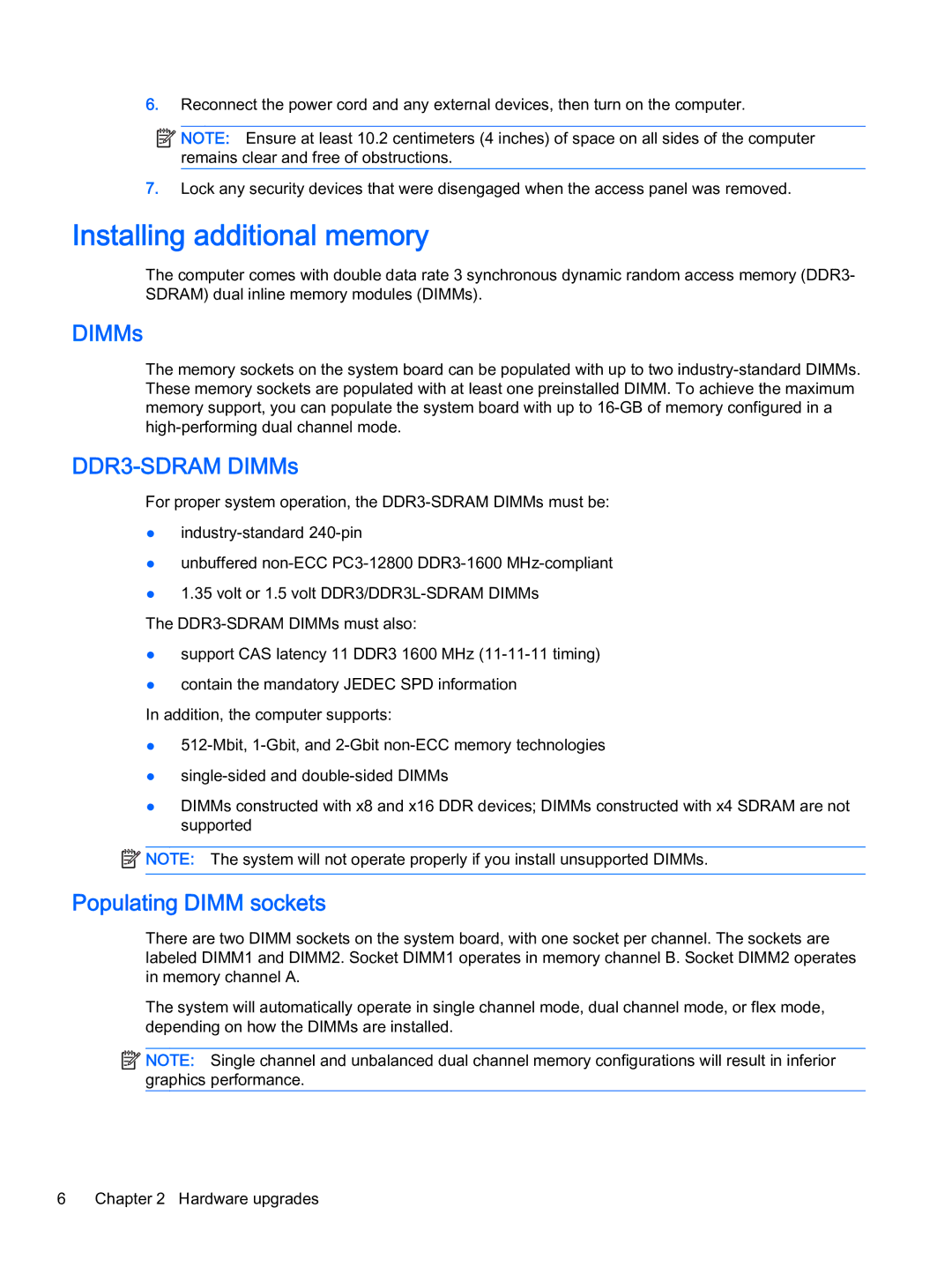
6.Reconnect the power cord and any external devices, then turn on the computer.
![]()
![]()
![]()
![]() NOTE: Ensure at least 10.2 centimeters (4 inches) of space on all sides of the computer remains clear and free of obstructions.
NOTE: Ensure at least 10.2 centimeters (4 inches) of space on all sides of the computer remains clear and free of obstructions.
7.Lock any security devices that were disengaged when the access panel was removed.
Installing additional memory
The computer comes with double data rate 3 synchronous dynamic random access memory (DDR3- SDRAM) dual inline memory modules (DIMMs).
DIMMs
The memory sockets on the system board can be populated with up to two
DDR3-SDRAM DIMMs
For proper system operation, the
●
●unbuffered
●1.35 volt or 1.5 volt
The
●support CAS latency 11 DDR3 1600 MHz
●contain the mandatory JEDEC SPD information
In addition, the computer supports:
●
●
●DIMMs constructed with x8 and x16 DDR devices; DIMMs constructed with x4 SDRAM are not supported
![]() NOTE: The system will not operate properly if you install unsupported DIMMs.
NOTE: The system will not operate properly if you install unsupported DIMMs.
Populating DIMM sockets
There are two DIMM sockets on the system board, with one socket per channel. The sockets are labeled DIMM1 and DIMM2. Socket DIMM1 operates in memory channel B. Socket DIMM2 operates in memory channel A.
The system will automatically operate in single channel mode, dual channel mode, or flex mode, depending on how the DIMMs are installed.
![]()
![]()
![]()
![]() NOTE: Single channel and unbalanced dual channel memory configurations will result in inferior graphics performance.
NOTE: Single channel and unbalanced dual channel memory configurations will result in inferior graphics performance.
6Chapter 2 Hardware upgrades
